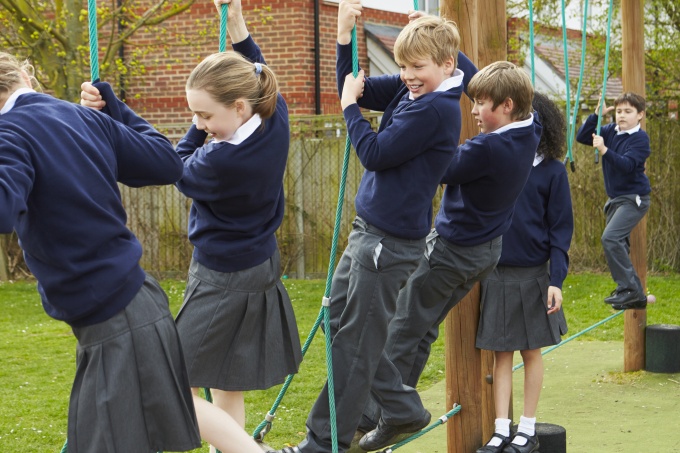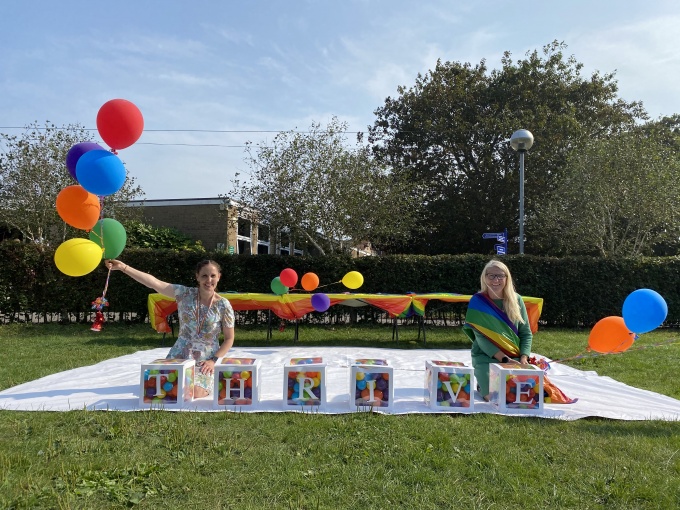This report begins to piece together the Theory of Change for Thrive, a story of how Thrive impacts on the world through its varying outcomes and the relationship between them.
These relationships are important, as often one outcome will lead to another. Similarly, an outcome for one set of stakeholders will have ramifications for others. Despite its inherent simplicity in terms of approach, the way that Thrive is implemented and the contextual factors that shape this implementation are often complex and non‐linear, and the storyboard of outcomes reflects this.
Despite the need for in‐depth exploratory work to tease out and piece together the outcomes, its was important not to lose sight of the fact that, ultimately, the aim was to assemble an impact map of material outcomes for the computation of an Social Return on Investment ratio; material outcomes being those which are both relevant and significant. Often such outcomes weren’t immediately identified but emerged from in‐depth discussions around the way that Thrive can play out in varying situations and the myriad of factors that influence its trajectory along the way.
The fact that one outcome will often lead to another means that the material outcome may in some cases be a secondary outcome, or happen indirectly as a result of something else. Timeframes are therefore important and as such the interviewees were also asked to consider the extent to which outcomes happen over the short, medium and long term, as well as the factors that can make one outcome lead to another across these timeframes.
An obvious question then is, how were short, medium and long term defined? Discussions around this were undertaken with all interviewees, and the answer (as one might expect) was that it is not straight forward, it is context dependent and is influenced by the age and developmental stage of the child receiving Thrive.
Broadly speaking it was felt that initial changes could be expected to be noticed within the first 3 months of implementing a Thrive action plan; although in some cases this initial phase could extend up to 6 or 9 months. When considering medium term impacts it seemed logical to consider a time period ranging from around 6‐9 months up to 3 or 4 years, depending on specific contexts or circumstances.
So in the majority of cases discussion around longer term outcomes encompassed those which might occur beyond 3 or 4 years but potentially up to 10 or even 20 years following the implementation of Thrive.
The precise definitions weren’t as important as the process of thinking about how outcomes might play out over various timeframes. Thinking this way helped interviewees to not only identify the outcomes, but also to consider how they might lead to further outcomes and what the longer term ramifications might be. Thus it became very much a part of piecing the story together, with the temporal elements forming the structure of the storyboard.
Nevertheless, the loose definition of time frames poses a question of how best to present the findings so as to illustrate the temporal nature of the outcomes, and of course the relationship between them.
To achieve this, outcomes are divided loosely between those that occur over the short‐medium term, and those that occur over the medium‐longer term.
Also following the pattern and substance of what was derived in the interviews, and to avoid any confusion or ambiguities, the outcomes are structured around stakeholder type, although in a number of cases an outcome for one stakeholder may have important ramifications for another. The case of how changes in a child’s behaviour might impact on their parents or siblings being an obvious example.
In a series of short impact reports, the outcomes are described for the following sets of stakeholders.
- Teachers and support staff
- Children and young people
- Parents, families and foster carers
- Professionals working in children’s services
Short‐medium term outcomes - Teachers and support staff
It is pertinent to begin this discussion of outcomes with the teachers and carers who practice Thrive because the process of impact begins at the training stage. As discussed in section 3.1, the focus on developing the self‐awareness of practitioners is significant, not only to the successful delivery of Thrive activities and actions, but also to the outcomes that emerge. All interviewees had completed some form of Thrive training, and all claimed that it had had profound impacts on their perspective of life, learning and relationships. Heightened self‐ awareness can not only make teachers more in tune with a child’s feelings but it also builds self‐confidence as well as developing the capacity to self regulate / regulate their own emotional state.
The training itself was said to have broken down inhibitions, which has a positive impact when working with children, colleagues and when dealing with parents. Increased self‐awareness also brings with it heightened levels of compassion, empathy and understanding of how others are feeling. A lot of it is about understanding how the children make the teacher feel, which in turn can tell them a lot about how the child is feeling.
This process also helps teachers to re‐frame their view of children and childhood, moving them away from a blame culture where children might be seen as being partly responsible for their problems. In this way Thrive helps to shift teaching staff away from a culture of blame towards a culture of learning, with benefits for teachers and children alike.
All of these factors mean that teachers feel more empowered when armed with the knowledge, tools and self awareness that Thrive affords them, which in turn means that they are better equipped emotionally to deal with difficult situations and as a result suffer reduced levels of stress. Because teachers are better able to spot and deal with problems early on helps to prevent fire fighting, and feelings of loss of control later on. Effectively ‘stopping the cycle’, which can eventually lead in some cases to the onset of stress and a feeling of not being able to cope. In turn this could potentially less time taken as sick leave and reduced expenditure for the school on supply teachers to cover absenteeism.
The empowerment of teachers, underpinned through the development of their own self‐awareness, therefore leads to a positive trajectory of change and with it a range of material outcomes. But such outcomes are not only focused around the children but Thrive’s emphasis on self awareness and building more effective relationships can also permeate strongly throughout the staff cohort. With a sufficient number of teachers trained in a school, Thrive can help build community and strengthen the support networks amongst staff, not only for dealing with children who are demonstrating challenging behaviour but for wider professional or emotional problems that, prior to Thrive training, may have been brushed under the carpet.
Essentially what this relates to is the modeling of Thrive principles throughout all aspects of life and work in the school. And the potential outcomes of this are significantly greater when a whole school approach is taken rather than a strategy aimed simply at having Thrive representation in a school. It also stands a much greater chance of having a profound impact on all aspects of teaching and the school community when there is genuine buy‐in and participation from the head teacher and senior management team.
The depth of potential impact across a staff cohort is therefore apparent, although in the short term the effects of heightened self‐awareness and openness to recognizing and dealing with problems can also mean that personal problems of teachers or carers are brought to the surface and thus need to be dealt with, which can then mean taking time out. Nevertheless, the trajectory of change whereby increased self‐awareness leads to a sea change of increased empathy, understanding, openness and strengthened relationships across all aspects of the school community, is clear.
To learn more about the medium-longer terms outcomes of Thrive on the four stakeholder groups, please click here.
Over to you
Reduced anxiety and behavioural incidents. Calmer classrooms filled with engaged leaners. Improved relationships with parents and carers. These are just some of the outcomes reported by settings embedding Thrive’s whole-school approach to mental health and wellbeing. Are you ready to join them? Click here to get started.
Pass it on
Small actions can lead to a big ripple effect. If you enjoyed this post or found it helpful, please consider supporting us in our mission to help every child and young person feel safe, supported and ready to learn by sharing it using the social media buttons below.
Want to join a like-minded community of senior leaders and classroom staff benefitting from insights and strategies to improve attendance, behaviour and attainment? Add your email address below. (It’s easy to unsubscribe).

_680.jpg)

(7)_680.jpg)
_680.jpg)
